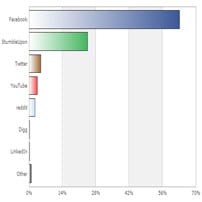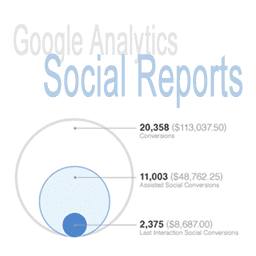Vine is Blowing Up for Brands – Why?
 Vine is the latest social video marketing platform and it’s taking off like wildfire. CNET reports Vine has 40 million users. And this is even after Instagram decided to copy Vine’s short video concept and use it on its social photo site. Twitter hit the nail perfectly with its six-second, looped videos. And brands are climbing on board to take advantage of their own efforts. And courting prominent Vine users to create videos featuring their brands.
Vine is the latest social video marketing platform and it’s taking off like wildfire. CNET reports Vine has 40 million users. And this is even after Instagram decided to copy Vine’s short video concept and use it on its social photo site. Twitter hit the nail perfectly with its six-second, looped videos. And brands are climbing on board to take advantage of their own efforts. And courting prominent Vine users to create videos featuring their brands.
Vine – Six Seconds of the Right Stuff
WebProNews reports Twitter users are just as likely to watch Vine videos as they are YouTube. The short videos match perfectly with the short message platform that Twitter provides. And brands need to learn how to show a concise, visually compelling method to catch attention. There are a variety of industries taking advantage of Vine. Although those that can be condensed into a short visual medium are doing the best. Examples include Urban Outfitter’s clothing selection. As well as Next’s furniture and the “Wolverine” movie. Stop motion is also a commonly used technique to fit more into a single clip.
Going Viral with Vine
You have only a few seconds to catch your customer’s attention. Vine’s six-second limit makes you work within a strict framework. You literally only get those few seconds to figure out how to attract the customer. And keep them watching and get your brand message across.
Humor is always one of your best bets for getting your Vine video to go viral. For example, Dove created a Vine video that shows people bowling with their soap and bath gel products. That’s a cute and clever way to show off their products. If your marketing message isn’t conductive to humor, try using visually distinctive techniques. And don’t forget to take advantage of the endless looping in Vine.
Also, don’t forget the appropriate hashtags. Since you do want to reach as much of your target audience as possible. Lowes has a particularly good Vine account. According to Adverblog, they utilize hashtags very effectively. The home improvement store uses brand specific and general tags, such as #Lowesfixinsix and #Howto. Vine videos are simple to share on other social networks. So don’t skimp on spreading them around and leveraging your existing audience.
Bring in the Vine Experts
Vine has only been out for seven months. But that’s more than enough time for some users to truly figure out what makes Vine tick. Some of these users are brands you can draw inspiration from. And some are budding Vine celebrities who are enjoying their Internet fame. The top Vine users include Jethro Ames. He produces household and how-to videos. Also, Khoa makes his videos out of construction paper. Also, Meagan Cignoli plays up the celebrity angle by posting behind the scenes fashion model Vines. Some of them are also more than happy to take money in exchange for creating custom Vine videos for your business. And promoting it to their entire social network. If you don’t want to go through trial-and-error to figure out exactly what you’re doing on Vine, this is one of the best ways to spend your marketing dollars.
Vine – Great for Slow Internet
YouTube has certainly generated plenty of brand awareness and money for businesses. But there’s one area it has a hard time penetrating. Rural areas of the United States suffer from limited Internet access. Those areas aren’t able to easily watch YouTube videos and other high-bandwidth content without the help of satellite Internet services. The Vine format is fast and quick-loading, whether you have a satellite Internet service such as Hughesnet.com or not. Essentially, Vine provides a similar marketing experience to YouTube without cutting off this massive user demographic.












